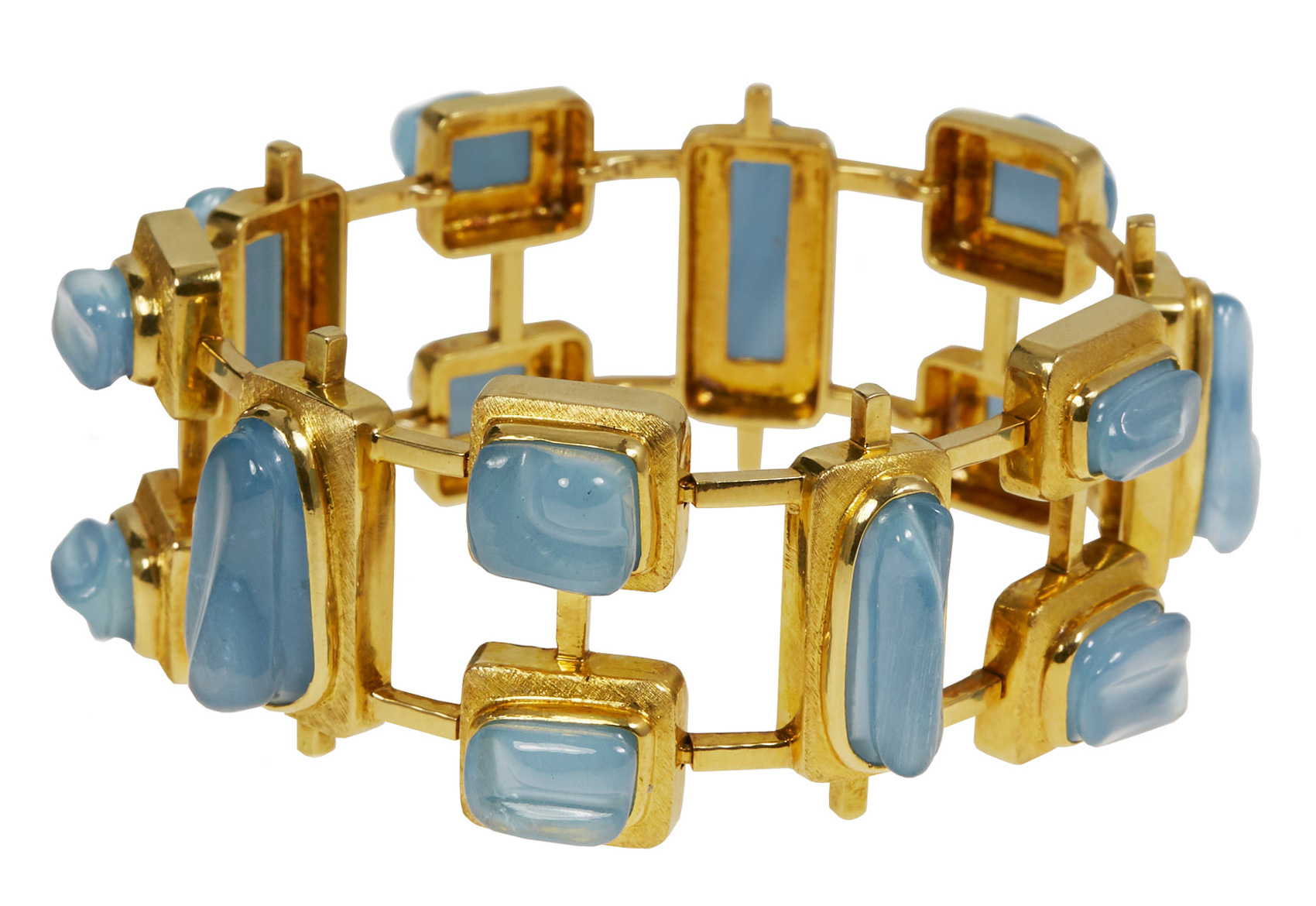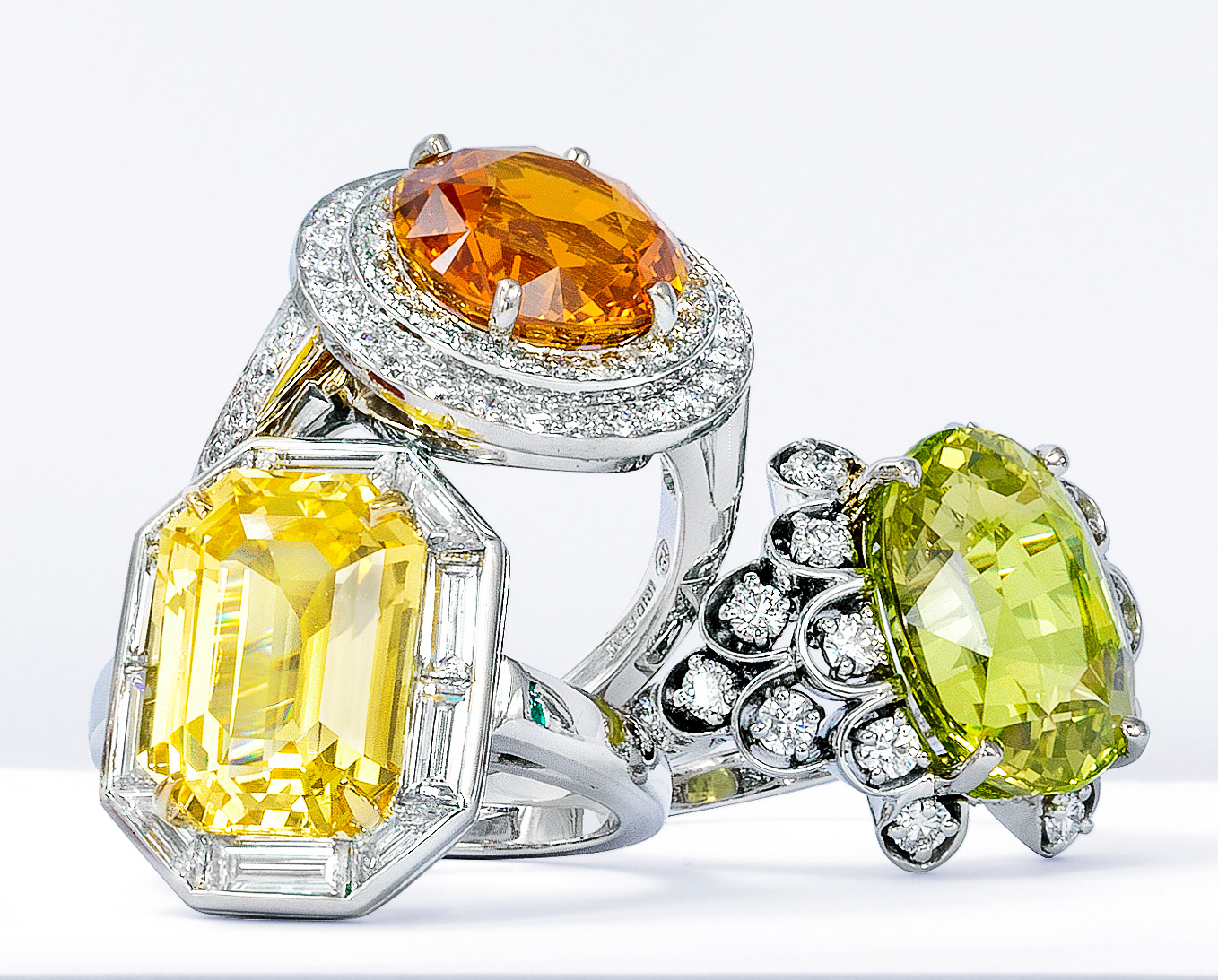Building a jewelry collection is unique to each person. Everyone has something different that gets their collector juices flowing. You may find that you love a particular gemstone, era, designer or motif and that hunting for that particular jewel is a passion that drives your collection. Christie’s Education, New York recently hosted a panel discussion, “On Collecting,” during New York City Jewelry Week 2018.
The panel was moderated by Angelina Chen, senior vice president, senior specialist jewelry, Christie’s New York. There were three panelists, each approaching collecting from a different angle. Tom Heyman, third-generation family member of jewelry design house Oscar Heyman, gave his perspective on creating pieces that are desired now and by future generations. Jewelry consultant and appraiser Dianne Batista brought her thoughts on collecting to the panel and gallerist Mahnaz Ispahani Bartos discussed how she curates a collection for her clients.

Top of Page: Tube bracelet set a world auction record for a jewel by Suzanne Belperron when it sold at Christie's New York for $852,500.
Angelina Chen: How does jewelry stand the test of time?
Mahnaz Ispahani Bartos: What we try to do through collecting is to make jewelers live on. We are organizing historical memory and place in time. We collect lesser-known designers who did not have the market power that they deserve. We research jewelry, find lost jewelers and show their work again. We look at the craftsmanship; when we do that, we see how designers create something new.
AC: This question is for Tom: What makes a piece of jewelry collectible and does Oscar Heyman consider how collectible a piece will become when it is being made?
Tom Heyman: When we approach design, we make a piece as well as possible so that it will be collectible over time. We look at the gems used, the integrity of the design and the workmanship. We design so that the original collector loves it, the kids want to keep it and it is fought over in the secondary market.
AC: What cues should a collector look for when acquiring a piece?
Dianne Batista: Jewelry is very personal. You have to make a connection to the designer who has made the piece. In collecting, you need to have the finest workmanship, but then it needs to be about the connection that you feel to the piece. I look for designers who have a distinctive craftsmanship that makes a piece collectible. I look for the signature of what the designer does, whether it’s enameling or stone carving or something else.
MIB: Collecting has to be intuitive; if you don’t love it, or if it does not speak to you then it becomes just another thing. But over time that changes for a collector. As the collection is built, you may buy to fill out an area of a collection.

AC: Tom, how does Oscar Heyman make pieces for tomorrow that will be as collectible as the vintage pieces?
TH: We have an extensive workshop with 64,000 tools and dies. We have continuity in construction and we have components from the past. If someone comes in with one earring from a pair that they had, we can match it. We can go back to the dies and molds that we used and make a new piece using the same parts. We continue our signature construction as our hallmark.
AC: How have people’s tastes changed over the years and do they want different types of jewelry now?
TH: Every collector is different. The best collections are the ones that come about because a collector has a passion for something. Tastes change and the right next item evolves over time.
DB: I love to see a collector’s eye change. As people continue to collect, they build an eye and develop a taste level. They look at jewelry with a more educated eye and passion for what they collect. Being able to educate people and see how they build their eye is very satisfying.

AC: What are people collecting now?
TH: Early in the company’s history, we originally created more pieces with diamonds. And then there was a shift to color, an area that has become the firm’s forte. For a while it was all about rubies, sapphires, emeralds, aquamarines and phenomenal stones. In the past ten years, we have been looking for anything gorgeous. Color has become very strong. People want everyday casual, but they also want bigger, finer stones that they can wear more casually.
MIB: There is a proliferation of color. Not all jewelers work with precious stones. In the 1970s, jewelers saw that the world was changing. Change was everywhere — in culture, art, design and architecture. It was a time of extraordinary change. Look at Andrew Grima. He wanted gold to look like something found in nature so he beat it and hammered it to get something different.
DB: David Webb was very influential. Coming from the South, he brought a true American aesthetic and spirit to New York. He was an early explorer of high jewelry without using precious stones. He used malachite and rock crystal to create something new.

AC: When did the idea of fine, but casual jewelry evolve into what people are looking for now?
TH: In the 1960s, people were looking for big, drippy necklaces. In the 1970s, it was about cocktail and cluster rings. Now people are looking for one big stone and more tailored lines. It happens in incremental steps. We look at our archives for inspiration and bits of the past will show up in new designs. We have to make pieces that are new, we can’t make pieces verbatim from our archives.
AC: How important is provenance to collecting jewelry?
DB: It is a very relevant type of collecting. I think an historic and very personal story is very interesting. But I like to imagine the life of a jewel even if it did not belong to a famous person.
TH: We have had a tremendous increase in requests to authenticate our pieces. There is a strong push for signed pieces. In new jewelry, the provenance is about the stone and where it comes from. We want gorgeous stones. It doesn’t matter where it comes from. We don’t want to see paper, we want to see the stone. Whether or not it’s pretty should be more important than its provenance.
AC: What is the next collectible?
DB: I get excited about the expansion of what people are collecting. It is exciting to explore for the future. People today are more open to colors and certain gems that used to be overlooked and not purchased.


